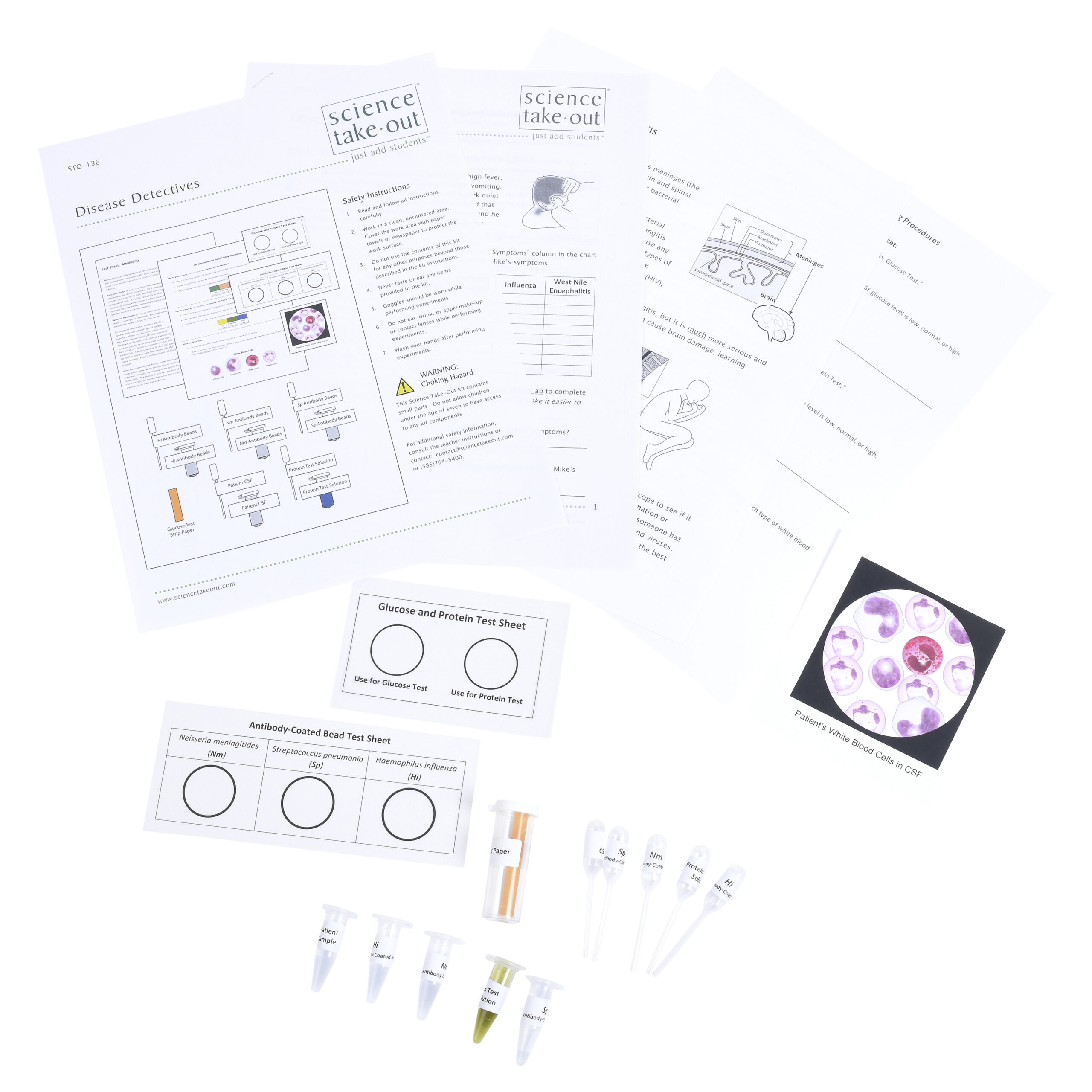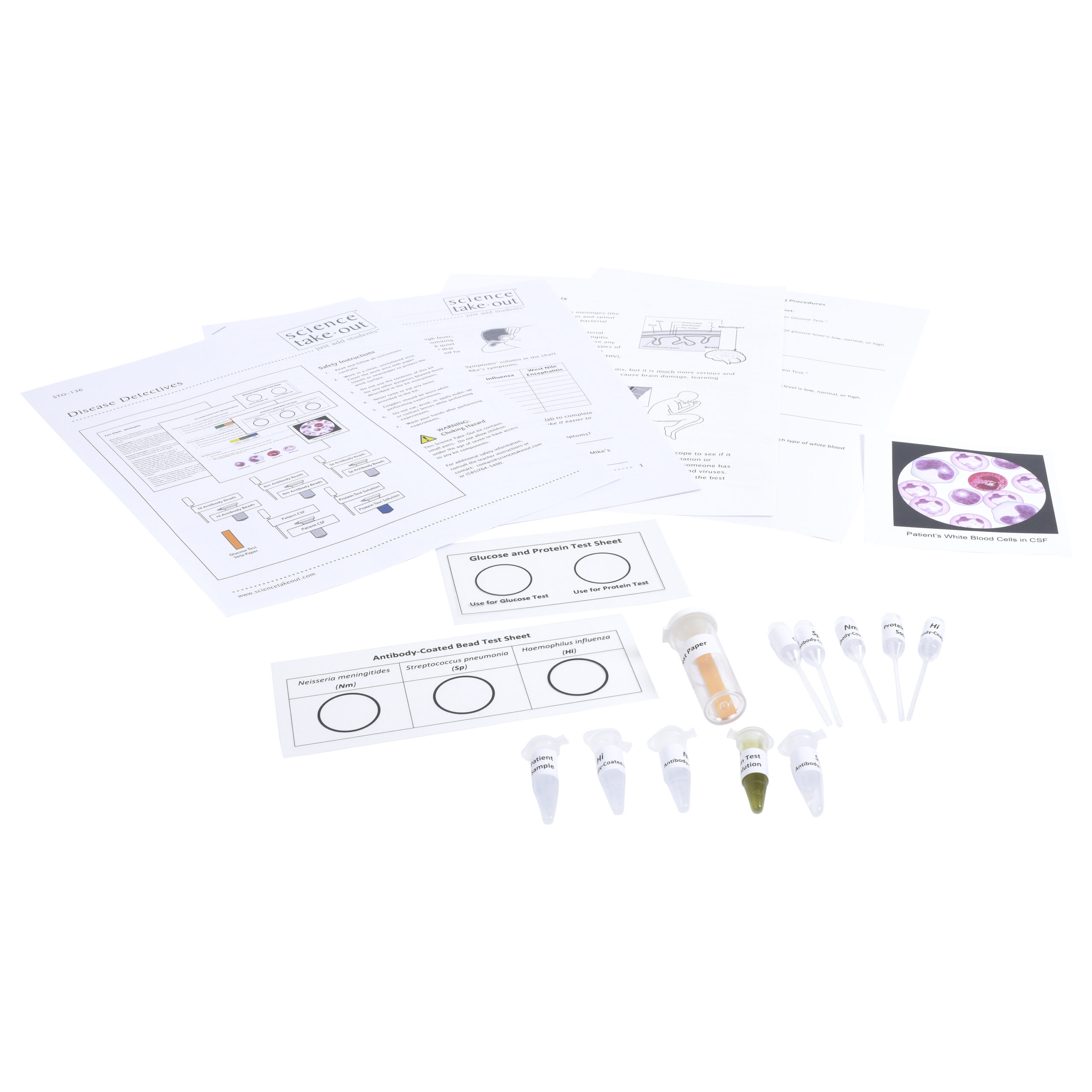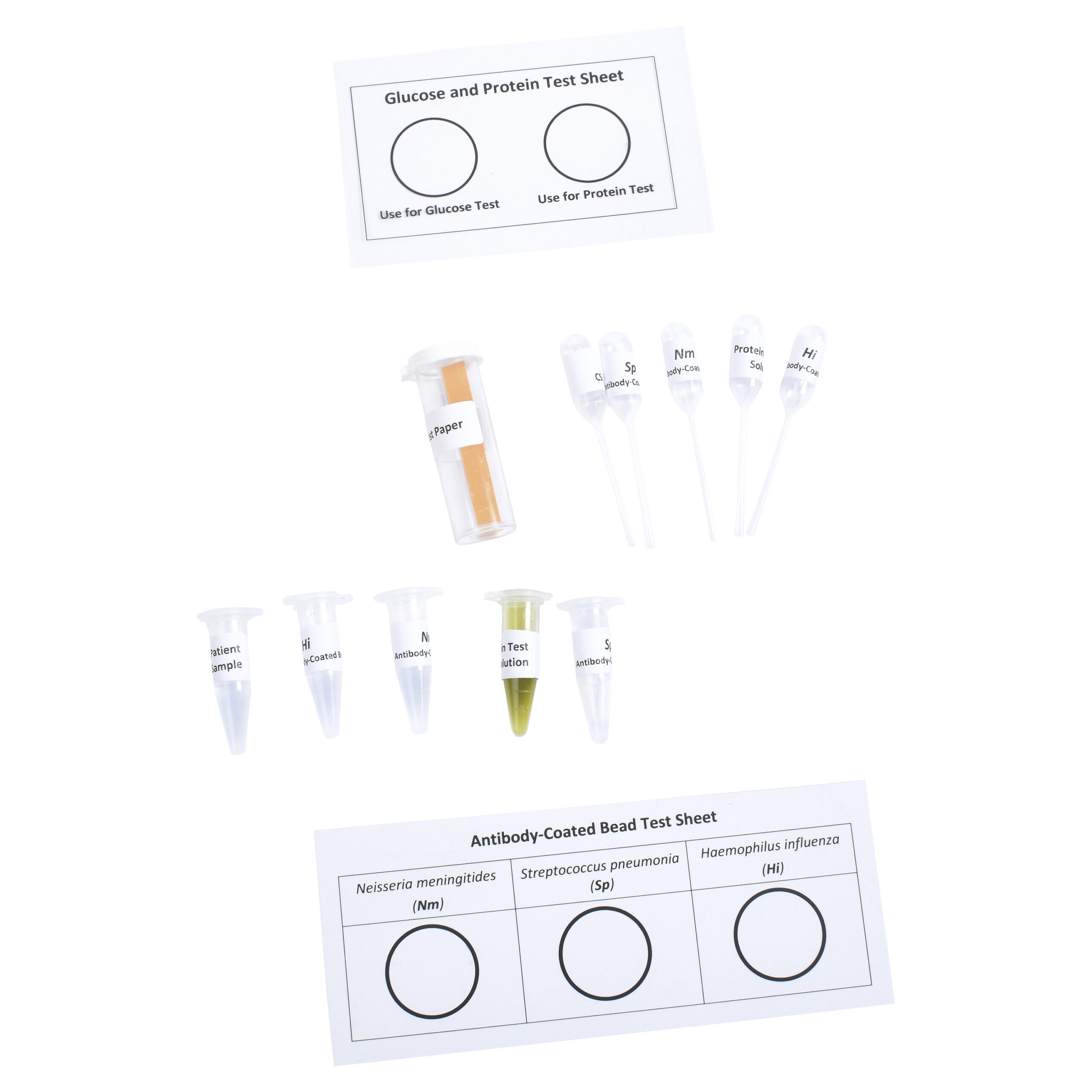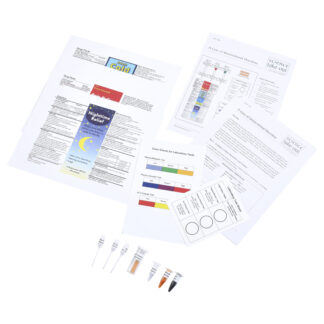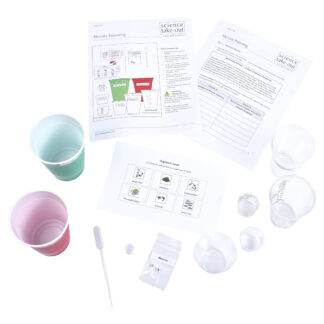Disease Detectives
$16.95 – $108.95
Does Mike have meningitis?
What is wrong with Mike? Could it be viral or bacterial meningitis?
- Perform simulated laboratory testing of cerebrospinal fluid to determine which disease is causing the patient’s fever and severe headache.
- Explore the importance of vaccinations to prevent meningitis.
Kit Includes
- Student instructions
- Fact Sheet: Meningitis
- CSF (cerebrospinal fluid) Testing Procedures
- Glucose and Protein Test Sheet
- Patient’s White Blood Cells diagram
- 1 tube of simulated “Patient CSF”
- 1 tube of simulated “Protein Test Solution”
- 1 strip of simulated “Glucose Test Paper”
- Antibody Coated Bead Test Sheet
- 1 tube of simulated “Nm Antibody-Coated Beads”
- 1 tube of simulated “Sp Antibody-Coated Beads”
- 1 tube of simulated “Hi Antibody-Coated Beads”
- 5 labeled droppers
Quantity Discounts
Kits:
- 1 – 9 kits: $16.95 each
- 10 – 24 kits: $16.10 each
- 25+ kits: $15.26 each
Unassembled:
- 1 – 9 packs: $108.95 each
- 10+ packs: $103.50 each
Refills:
- 1 – 9 packs: $42.95 each
- 10+ packs: $40.80 each
Correlation to Next Generation Science Standards (NGSS) Shop by NGSS »
Performance Expectations:
MS-LS1-3. Use argument supported by evidence for how the body is a system of interacting subsystems composed of groups of cells.
Science & Engineering Practices
Engaging in Argument from Evidence - Use an oral and written argument supported by evidence to support or refute an explanation or a model for a phenomenon.
Disciplinary Core Ideas
LS1.A: Structure and Function - In multicellular organisms, the body is a system of multiple interacting subsystems. These subsystems are groups of cells that work together to form tissues and organs that are specialized for particular body functions.
Crosscutting Concepts
Systems and System Models - Systems may interact with other systems; they may have sub-systems and be a part of larger complex systems.
